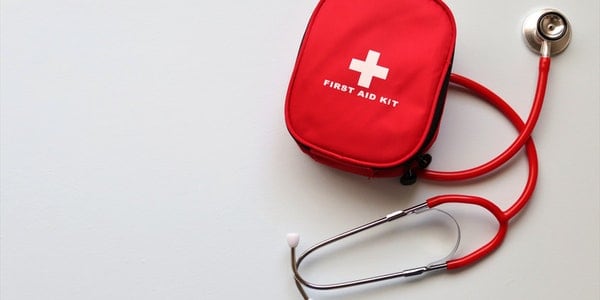SAFETY FOCUSED
July 2023
Present by: RS Risk Solutions
Lyme disease was first discovered in 1975 after an unusual outbreak of arthritis in Lyme, Connecticut. Today, Lyme disease is common across the UK, but the highest risk of exposure is in grassy and wooded areas in Southern and Northern England and the Scottish Highlands.
Preventing Lyme Disease
If you work outdoors this Summer, you could be exposed to insects. In particular, Lyme disease is a serious concern. Lyme disease is a bacterium typically carried by mice and other small rodents. It is transmitted through ticks that have previously bitten infected animals and then bite humans. Symptoms of Lyme disease typically develop within two weeks of the tick bite. The majority of those infected develop a rash in the shape of a bull’s-eye surrounding the bite, but up to 40% of people may not exhibit this symptom at all. Instead, they may develop flu-like symptoms, including fever, chills, swollen lymph nodes, fatigue, headaches and muscle pain.
There are several steps that you can take to help lower your risk of contracting Lyme disease while working outdoors. Namely, its best to use tick and bug repellent and wear lightly coloured, fitted clothing (eg long-sleeved shirts, trousers and close-toed shoes). Also, check your body for ticks after each shift. If you find any, remove them with tweezers and clean the area with an antiseptic. Then, take a shower and thoroughly wash and dry your clothing at high temperatures.
When left unattended, Lyme disease can cause arthritis, heart conditions, brain damage and nerve disorders. As such, if you think you have been infected, seek medical attention immediately. A blood test can confirm whether you have the disease. If you test positive, your doctor will prescribe antibiotics to kill the infection.
For more information on staying safe while working outdoors, contact your supervisor.
First-aid Basics
A workplace accident requires prompt action to help employees who are injured. For example, if you are nearby when a colleague trips and hurts their leg at work, your knowledge of first aid could prove essential.
Cuts and Lacerations
Should an individual receive a cut, the most important action is to stop the bleeding as quickly as possible. Have the injured person to lie down, then apply direct pressure on the wound with a sterile pad or the cleanest piece of cloth you can find. If the cloth becomes saturated with blood, add more pads or cloths and secure them with a bandage.
If the wound is on an arm or a leg, and the blood flow is particularly hard to stop, you can try pressing on the brachial or femoral arteries to reduce the flow. Always seek immediate medical attention amid any incident involving profuse bleeding.
Chemicals
You may also need to work with chemicals from time to time. Should chemicals get into someone’s eye, use the emergency eyewash station. If one is unavailable or not nearby, dilute the chemical by pouring water into the eye. Pour at least 1 litre of water into the corner of the eye so that it runs over the surface and flows out the other side.
If chemicals get onto an individuals skin, wash the area repeatedly with large amounts of water. Remove any contaminated clothing. Check the label on the chemical to see if any additional steps should be taken. Call 999 if the affected individual experiences dizziness, nausea, chest pains or shortness of breath.
Particles
If a foreign particle gets embedded into someone’s eye, do not try to remove it like you would a chemical. Instead, have the injured person lie flat, place a sterile pad over the eye, bandage it and seek medical help immediately. Avoid movement that could drive the particle deeper into the eye. If the particle is under the eyelid or floating on the surface of the eyeball, you can try removing it with the corner of a clean piece of cloth. However, never rub someone’s eye when trying to remove a particle from it.
Shock
A severe accident or injury often brings on a condition called shock. A person experiencing shock may appear weak or confused, have cold or clammy skin, feel nauseous or display vacant eyes with dilated pupils.
To help someone in shock, place the individual on their back and elevate their feet unless head or chest injuries are present. Then, raise their head and shoulders with a pillow. Next, place blankets over and under their body to conserve heat. Don’t administer any fluids unless professional medical services are delayed for at least 30 minutes. If that is the case, give the individual half a glass of plain, lukewarm water every 15 minutes. Stop providing fluids if the person becomes nauseated.
Takeaway
Remember, first aid is the best immediate response to an injury, but you should always seek appropriate medical attention afterward.
Speak to your supervisor for additional first-aid resources.

